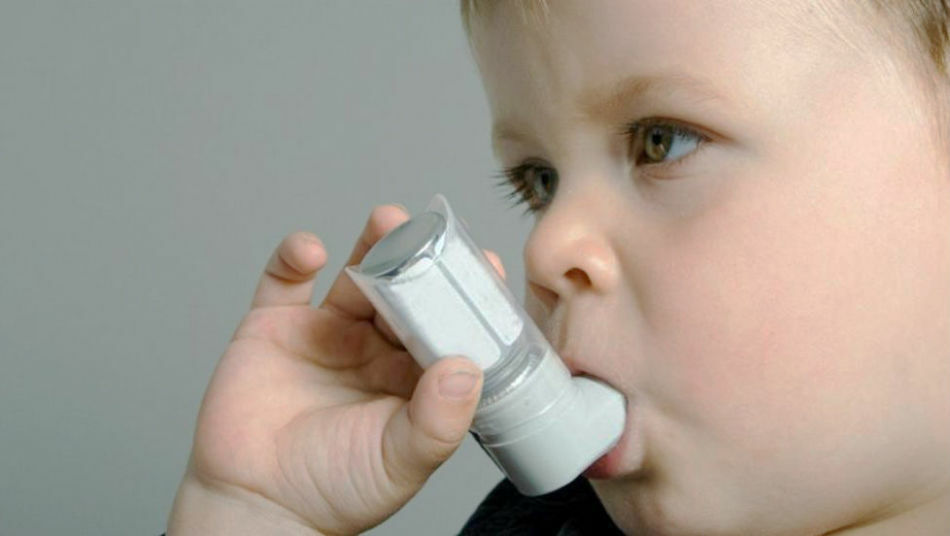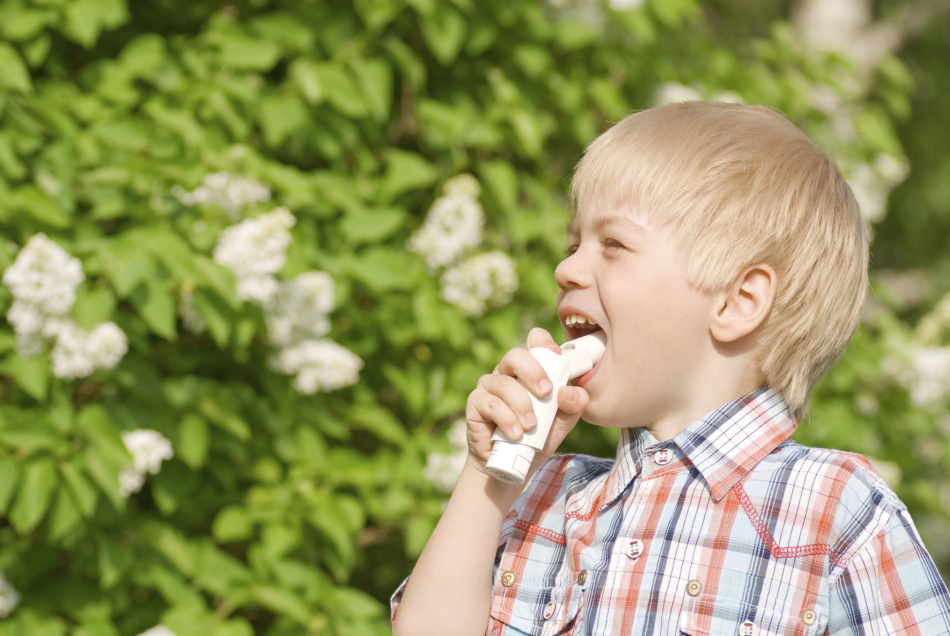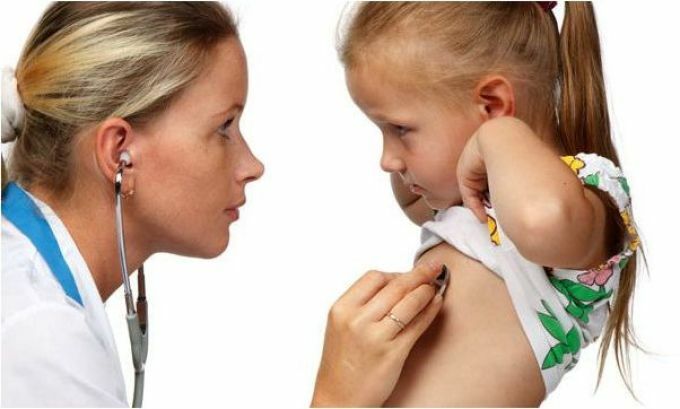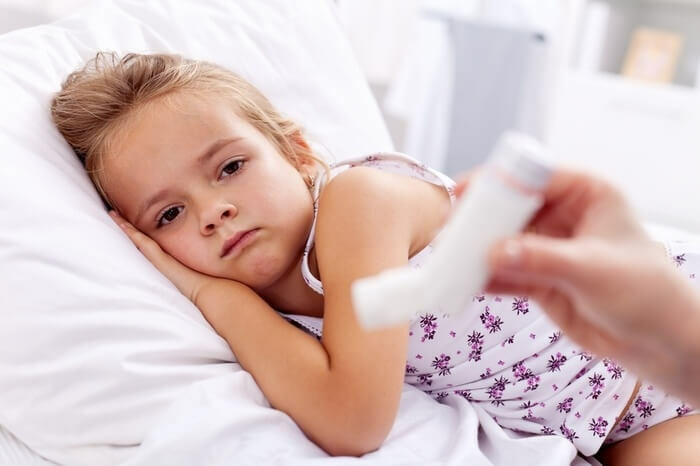Your child was diagnosed with bronchial asthma? Are you upset and do not know what to do next? From our article you will find out why this pathology arises and how to deal effectively with it.
Contents
- Forms of bronchial asthma in children
- Causes of bronchial asthma
- Diagnosis of bronchial asthma in children
- Emergency care for asthma in children
- Treatment of bronchial asthma in children
- Preparations for bronchial asthma for children
- Caring for a child with bronchial asthma
- Video: How to treatasthma? Bronchial asthma treatment in children
Asthma is a rather unpleasant pathology caused by inflammatory conditions in the respiratory tract, which provoke bronchospasm and mucus secretion. These pathological processes interfere with the normal intake of air into the lungs and the child begins to choke. This is due to the fact that in the bronchi is formed extensive swelling, which makes them susceptible even to the slightest allergen.
If you do not start taking action at this stage, then after a while, in addition to shortness of breath, the child will also have a violent cough. Most often, such problems occur in children against a background of reduced immunity. Therefore, if you want your kid to never know what asthma is, try to maximally maintain the defenses of the body.
Forms of bronchial asthma in children
 Severe form of bronchial asthma in a child
Severe form of bronchial asthma in a child - Conditionally, asthma can be divided into two types - atopic and non-atopic. Most often, children develop atopicheskaya or as it is also called allergenic asthma. Its appearance provokes various kinds of allergens, for example, dust, pollen, synthetic additives and fillers, household chemicals or even pet hair
- In this case, you just need to find out what irritates the baby's bronchi and get rid of the sources, and after a whilehe can again lead a habitual way of life. Non-atopic asthma occurs quite infrequently and develops in children prone to chronic infectious diseases
- A prolonged laryngitis or pharyngitis may trigger the appearance of suffocation. Therefore, we must try to get rid of these diseases as quickly as possible and prevent them from moving to the chronic stage.
Types of bronchial asthma in children:
• Light. The child can only have a slight difficulty in breathing, periodically there is a cough and a sore throat. Thus the kid can feel quite normally and on what not to complain
• Average. In this case, there may already be malaise and anxiety. Breathing becomes a whistle and literally immediately connects to it a paroxysmal cough. Speech can also be broken, and the kid can pronounce small sentences or separate words
• Heavy. In addition to cough and shortness of breath, sick children have cyanotic dermatological cover and excessive sweating. In such a course of illness, a child may not even talk
• Astamatic. The most severe form of the disease. The attack can last from 6 to 10 hours. At the same time, practically no drugs help to alleviate the condition of the patient. Most often develops on the background of getting used to medical therapy
Causes of bronchial asthma
 Pollen of plants provokes the development of bronchial asthma in a child
Pollen of plants provokes the development of bronchial asthma in a child - The main reason for the development of asthma is the hyperactivity of the bronchi. It is from their reaction to stimuli that depends how complex the course of the disease will be. If your child has allergic asthma, then the cause of its development could be home dust or, for example, pharmacy vitamins
- But if you are not lucky and your child developed an infectious form, then it's hardly possible to eliminate the cause of its appearance, because in this caseyou have to fight with bacteria, viruses and fungi. Another factor that provokes the appearance of this pathology is the large weight of the child
- This is due to the fact that the diaphragm of such children is placed slightly higher than usual. This arrangement interferes with the proper ventilation of the lungs and bronchi and makes breathing more difficult. Asthma
disappears without leaving a trace after asthma
• Heredity
• Humidity in the house
• Mold on the walls
• Pollen of plants, flowers and trees
• Cold and dry air
• Excessive physical activity
• Children's cosmetics
• Some foodstuffs
Diagnosis of bronchial asthma in children
 The doctor diagnoses bronchial asthma in a child
The doctor diagnoses bronchial asthma in a child - The most important symptom of asthma is whistlingobnoe pristupopodobny breath and cough. If recently your child had at least one of them, it will be better if you sign up for an appointment with a doctor. And you can even start with a pediatrician. After examination and delivery of all necessary tests, he will advise you to which specialist will need to contact in the future
- Diagnosis of bronchial asthma is a rather complicated process, because besides the doctor, the patient himself must be attentive. Since the child is unlikely to be able to tell what is an irritating factor, it is up to you to understand what causes spasms in your child's bronchial tubes. Next, the doctor
- should take the job. First he should ask you about all the obvious symptoms and find out how often they appear. And if all factors indicate that the child has asthma, more in-depth laboratory and instrumental research should be prescribed. And only after all the data are received, the doctor will be able to prescribe the correct therapy for your child
. To clarify the diagnosis, the sick child is prescribed:
• Spirometry
• Peakflowmetry
• Electrocardiography
• Chest X-ray
• Blood test, sputumand urine
Emergency care for bronchial asthma in children
 Plant your child in the most convenient position
Plant your child in the most convenient position Asthma is a rather complex disease in which very much sufferingthey have bronchi. If the disease becomes severe, then in case of an attack, there is a threat of suffocation. And if an adult can still cope with unpleasant symptoms, then young children suffer a bad cough and breathing difficulty.
Very often against the background of spasm in small children, the secretion of the mucosa increases as much as possible, and this leads to the fact that the lumens in the bronchi overlap even more. If you do not help the baby as soon as possible to get rid of the attack, then it can even lead to a fatal outcome.
Emergency assistance is needed in the following cases:
• Severe acute manifestation of
symptoms • Child can not exhale air
• On exhalation, strong
noise is heard • Kid's skin turns blue
• Even rattling is heard
strong wheezing • Child sits with a stopon the hands
Basic rules for emergency care:
• Keep the baby always in a sitting position
• Make sure that the room is as fresh as possible
• Unbutton all clothing( it should not beand even minimally squeeze the chest)
• Expand the lumen in the bronchi using the inhaler
• Never hold the baby's head when he coughs
• Try to give him water( it should be room temperature)
• Give the child medications by the doctor anddo inhalation
• If the attack learns to stop, then call for help
Treatment of bronchial asthma in children
 Proper treatment of bronchial asthma in a child
Proper treatment of bronchial asthma in a child How do you probably understand the correct treatmentie your child can choose only a qualified technician. After consulting with him you can understand how and when to take these or other medications. A lot of different means are used to treat asthma.
Some of them help cope with bouts of coughing and choking( they are taken only to relieve symptoms), and others are needed to relieve the inflammatory process. They will have to take quite a long time, periodically taking small breaks. Depending on the form of the disease and the severity of its course, the dosage of medications can either decrease or increase.
So:
• Light form. Does not require medical treatment. The main thing is to ensure that the baby is well fed and walks in the open air a lot.
• Medium shape. In this case, to ease the condition of the baby will help bronospazmalitiki and inhalation. Also, make sure that your child does not come into contact with the most common allergens
• Heavy form. This type of asthma is characterized by quite severe attacks, which can only be stopped with the help of hormonal drugs
Preparations for bronchial asthma for children
 Effective medications for the treatment of asthma in children
Effective medications for the treatment of asthma in children Although asthma is a complex disease with the right approach, it is possible to achieve fairly good results. If you strictly follow all the advice of a doctor, then after a while your child can live a normal life and even play sports. Of course, such results can be achieved only if the disease has not passed into a chronic stage.
Therefore, if you notice at least the slightest signs of asthma in your child, then immediately begin to take action. After all, if you do not stop the development of the disease at the initial stage, it is likely your child will have to live with her all his life.
The most effective means for treating bronchial asthma in children:
• Taileed. Can be used to treat patients with mild illness. But note it can not be taken simultaneously with Ambroxol
• Budesonide. Glucocorticosteroid hormone preparation, which has a fairly good anti-inflammatory property. Most often used for inhalation
• Metipred. Tablet hormones that are taken at the time of an exacerbation of the disease or an attack of
• Formoterol. Quickly expands the lumens in the bronchi and thereby normalizes the breathing of a small person
• Lazolvan. Maximizes quickness of sputum and stimulates its release outside
. Child care in case of asthma.
 . Try not to get in contact with allergens.
. Try not to get in contact with allergens. - . If you want your child not to feel special and be able to play calmly with his peers, then try to maximize correctly forhim to look after. This does not mean that you should always protect him from environmental influences and communication with animals.
- You must train your baby to think that his illness is temporary and that if he is properly treated, soon it will disappear altogether. The right attitude sometimes helps better than any tablets. Therefore, do everything to ensure that the baby is not afraid of his attacks and knew how he should behave when you are not around.
- Be sure to tell him which pills and under what circumstances he should take. Just do not leave him medicines in batches. You can easily leave him a couple of pills and calmly go about his business.
Care rules:
• Buy hypoallergenic bedding for your child
• If possible, get rid of all carpets and tracks
• Twice a day, do a wet cleaning in the house
• Raiseimmunity of the child
• In the period of exacerbation, stimulate sputum discharge
• If a severe dyspnea is observed then follow up so that during sleep the head of the child is maximally raised
